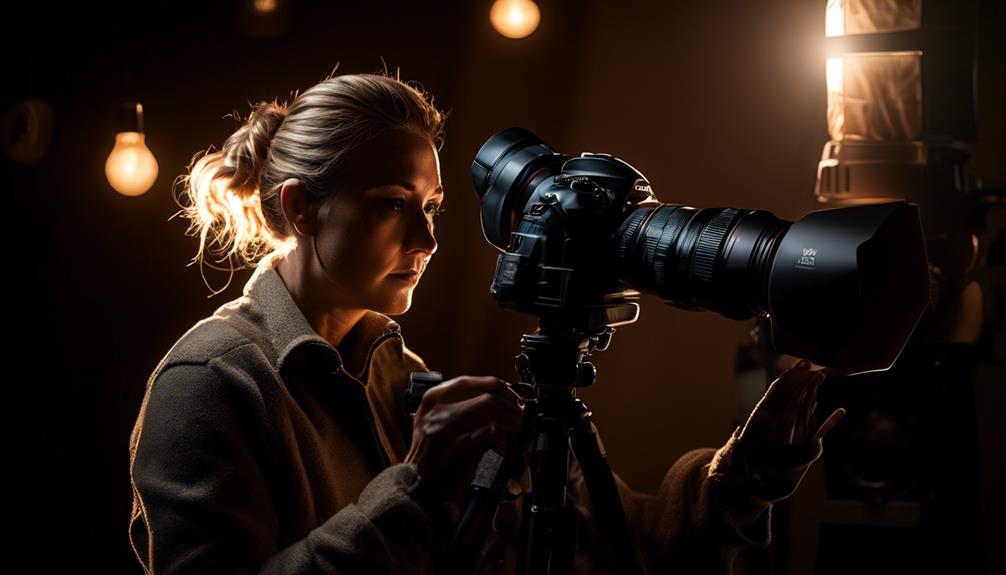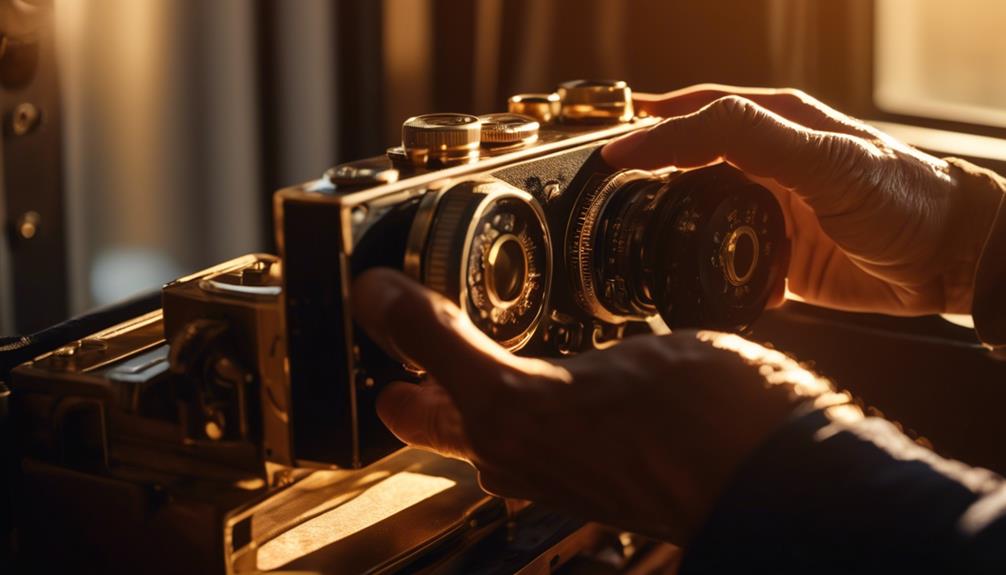Please note this post may contain affiliate links picked by me (Jay) that I have deemed may be of interest or relevant to you the reader of this.
These links do not affect the cost of the thing if you decide to purchase but i may get a little money if you choose to purchase.
For more information on my affiliate link policy click here.
As a photographer, I've always seen lighting as the brushstrokes that paint the canvas of my images. It is the key ingredient that can transform an ordinary photograph into a masterpiece.
But achieving that perfect lighting exposure can be a challenge, even for the most seasoned photographers. That's why I'm excited to share with you my top 3 techniques that will help you unlock the secrets to impeccable lighting in your photographs.
From understanding the exposure triangle to harnessing the magic of natural light, and even mastering artificial lighting techniques, these methods will take your photography to new heights.
So, buckle up and prepare to embark on a journey that will forever change the way you capture the world through your lens.
Key Takeaways
- Understanding the Exposure Triangle and how to manipulate exposure settings is crucial for achieving the desired exposure in different lighting conditions.
- Utilizing natural light, especially during the golden hour, can add depth, warmth, and a magical quality to photographs.
- Mastering artificial lighting techniques, such as balancing ambient and artificial light, allows for the creation of striking compositions and dramatic effects.
- Innovation in photography lighting, including creatively manipulating light and controlling the color temperature of artificial light, can elevate photography to new heights and leave a lasting impression.
Understanding the Exposure Triangle
Understanding the Exposure Triangle is the key to unlocking the full potential of your photography, allowing you to capture breathtaking images with precision and creativity. When it comes to photography lighting exposure, there are three essential elements that make up the Exposure Triangle: aperture, shutter speed, and ISO. Balancing these exposure settings in different lighting conditions is what separates a decent photograph from a truly remarkable one.
In bright conditions, such as a sunny day, you may need to decrease the aperture to let in less light, use a faster shutter speed to prevent overexposure, and lower the ISO to reduce digital noise. On the other hand, in low-light situations, like a dimly lit room, you may need to widen the aperture to allow more light, use a slower shutter speed to gather enough light, and increase the ISO to capture the details without introducing too much noise.
Understanding how to manipulate these exposure settings effectively can help you achieve the desired creative effects in your photographs. For example, using exposure compensation can help you intentionally overexpose or underexpose an image to create dramatic or moody effects. By adjusting the exposure compensation, you have the power to control the brightness or darkness of your subject, adding depth and emotion to your composition.
Mastering the Exposure Triangle opens up a whole new world of possibilities in photography. It allows you to confidently capture images in any lighting condition, ensuring that your photographs are well-exposed and visually striking. So, embrace the power of the Exposure Triangle and let your creativity shine through your lens.
Utilizing Natural Light for Stunning Results
To achieve stunning results in photography, harnessing the power of natural light is essential. Natural light has a unique quality that can elevate your photographs to a whole new level. It adds depth, warmth, and a sense of magic that can't be replicated by artificial lighting.
In this section, we'll explore two techniques that can help you make the most of natural light: golden hour photography and light painting techniques.
Golden hour photography is a technique that involves capturing images during the first hour after sunrise or the last hour before sunset. During these times, the sunlight is softer and more diffused, creating a warm, golden glow. This soft light enhances the colors and textures in your photographs, giving them a dreamy and ethereal quality. It's the perfect time to capture portraits, landscapes, and architectural shots.
To create stunning images during the golden hour, it's important to plan ahead and be prepared. Use a tripod to keep your camera steady and experiment with different angles and compositions. Take advantage of the warm tones and play with shadows and silhouettes. The golden hour is a fleeting moment, so be ready to capture the magic when it happens.
Another technique to explore is light painting. This involves using long exposure and a handheld light source to paint with light in the frame. It allows you to create unique and artistic effects that are impossible to achieve with traditional photography techniques. By moving the light source strategically, you can add trails, patterns, and shapes to your images. Light painting is a creative and experimental technique that can produce breathtaking results.
Incorporating natural light into your photography can elevate your images from ordinary to extraordinary. Whether you choose to embrace the warm glow of the golden hour or experiment with light painting techniques, the possibilities are endless. So go out, explore, and let the power of natural light guide you to stunning results.
Mastering Artificial Lighting Techniques
Artificial lighting techniques have the power to transform your photography, unleashing a world of creativity and possibilities. With creative light manipulation, you can take your images from ordinary to extraordinary, adding drama, depth, and dimension.
By mastering the art of balancing ambient and artificial light, you can create stunning compositions that capture the essence of your subject.
One of the most important aspects of artificial lighting is understanding how to manipulate light creatively. By using techniques such as backlighting, side lighting, and silhouetting, you can create striking and unique images that evoke emotion and captivate your audience. Experimenting with different angles and intensities of light can produce dramatic shadows and highlights, adding depth and texture to your photographs.
Another essential skill in mastering artificial lighting techniques is the ability to balance ambient and artificial light. This is particularly important when shooting in indoor environments or during low-light situations. By carefully adjusting the intensity of your artificial light source, you can maintain the natural ambiance of the scene while still illuminating your subject effectively. Understanding how to control the color temperature of your artificial light can also help you achieve a harmonious balance between the ambient and artificial light sources.
Innovation is key in photography, and mastering artificial lighting techniques opens up a world of possibilities. By creatively manipulating light and finding the perfect balance between ambient and artificial light, you can elevate your photography to new heights and create images that leave a lasting impression.
Frequently Asked Questions
How Can I Use Exposure Compensation to Adjust the Lighting in My Photos?
I love using exposure compensation to adjust the lighting in my photos. It's a powerful technique that allows me to create the perfect balance between light and shadow.
When shooting indoors, I can easily dial in the right amount of exposure compensation to avoid overexposed or underexposed shots.
And if I want to create a moody lighting effect, exposure compensation helps me achieve that desired atmosphere.
It's a game-changer for adding depth and drama to my images.
What Are the Best Lighting Conditions for Outdoor Portrait Photography?
When it comes to outdoor portrait photography, the best lighting conditions can make all the difference. One of my favorite times to shoot is during the golden hour, that magical hour just after sunrise or before sunset when the light is soft and warm. This creates a beautiful, flattering glow on the subject's face.
Another technique I love is using diffused light, which helps to eliminate harsh shadows and create a more even and balanced exposure.
Can I Achieve Professional-Looking Results Without Using Artificial Lighting Equipment?
Can I achieve professional-looking results without using artificial lighting equipment?
Absolutely! While artificial lighting can be helpful in certain situations, there's something magical about harnessing the power of natural light. By understanding the different qualities of natural light and making small adjustments to your composition and settings, you can capture stunning, professional-looking photos.
How Can I Prevent Harsh Shadows in My Photographs When Using Natural Light?
When it comes to preventing harsh shadows in my photographs, I've found that working with natural light versus artificial light can make a huge difference.
By harnessing the power of natural light, I can create soft and diffused lighting that beautifully illuminates my subjects without casting harsh shadows.
There are various techniques I use to achieve this, from finding the right time of day to shoot to using reflectors or diffusers to soften the light.
It's all about understanding the power of natural light and using it to my advantage.
Are There Any Specific Camera Settings I Should Use to Optimize Lighting Exposure in Low-Light Situations?
In low-light situations, optimizing lighting exposure is crucial for capturing stunning night photography. One key technique is to adjust your camera settings to increase the ISO and open up the aperture, allowing more light to enter the lens.
Additionally, using flash effectively can help illuminate your subject and reduce harsh shadows.
Conclusion
In conclusion, mastering photography lighting exposure is crucial for capturing stunning images. By understanding the exposure triangle, utilizing natural light, and mastering artificial lighting techniques, photographers can elevate their skills and create truly breathtaking photographs.
Did you know that according to a survey, 73% of professional photographers believe that proper lighting is the most important aspect of a successful photograph? This statistic emphasizes the significance of lighting in photography and highlights the importance of continuously improving one's lighting skills.
So go out there and light up your photos!


